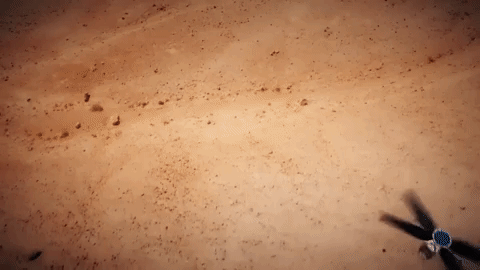Insta
NASA Planning To Send The First Unmanned Helicopter To Mars In 2020

Animation of Mars helicopter and Mars 2020 rover. (NASA/JPL-CalTech)
As part of its mission to Mars, which is scheduled for launch in 2020, the National Aeronautics and Space Administration (NASA) is planning to send the first unmanned helicopter to the red planet, the agency has said.
The helicopter, developed by NASA’s Jet Propulsion Laboratory, is being sent to test the viability and potential of heavier-than-air vehicles on the red planet.
Developed in four years, the helicopter weighs little under 1.8 kilogrammes and has a fuselage of the size of a softball. Its twin blades will rotate at almost 3,000 rotations per minute in the thin Martian atmosphere. This is about ten times more than the rate of a helicopter designed to fly under normal conditions on Earth.
“Exploring the red planet with NASA’s Mars Helicopter exemplifies a successful marriage of science and technology innovation and is a unique opportunity to advance Mars exploration for the future,” said Associate Administrator For NASA’s science mission directorate Thomas Zurbuchen.
“After the Wright Brothers proved 117 years ago that powered, sustained, and controlled flight was possible here on Earth, another group of American pioneers may prove the same can be done on another world,” added Zurbuchen.
The helicopter will be equipped with solar cells to charge its lithium-ion batteries and a heating mechanism to keep it warm through the cold Martian nights.
During the initial parts of the Mars 2020 mission, the helicopter will do attached to the belly pan of the rover being sent to the red planet.
“The altitude record for a helicopter flying here on Earth is about 40,000 feet. The atmosphere of Mars is only one percent that of Earth, so when our helicopter is on the Martian surface, it’s already at the Earth equivalent of 100,000 feet up,” said Mars Helicopter project manager Mimi Aung.
As part of a 30-day flight test campaign, the helicopter will fly up to a few hundred meters for a duration as long as 90 seconds. In the first flight, it will make a short vertical climb to three metres and hover at that height for about 30 seconds.
Introducing ElectionsHQ + 50 Ground Reports Project
The 2024 elections might seem easy to guess, but there are some important questions that shouldn't be missed.
Do freebies still sway voters? Do people prioritise infrastructure when voting? How will Punjab vote?
The answers to these questions provide great insights into where we, as a country, are headed in the years to come.
Swarajya is starting a project with an aim to do 50 solid ground stories and a smart commentary service on WhatsApp, a one-of-a-kind. We'd love your support during this election season.
Click below to contribute.
Latest